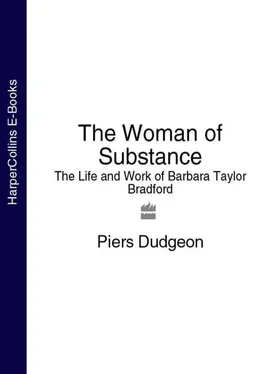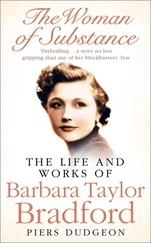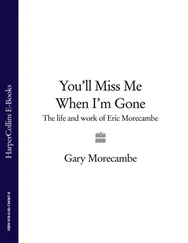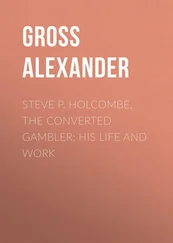1 ...7 8 9 11 12 13 ...20 The steps leading up to economic crisis and the Tory majority in 1931 led also to Adolf Hitler becoming German Chancellor two years later, and, seemingly inexorably, to war six years after that. Those who lived through it will tell you that the slump started in 1928 in the North of England, but it became world news in October 1929 with the Wall Street crash. Between 1930 and 1933, following President Hoover’s decision to raise tariff barriers, world trade fell by two-thirds. Unemployment in America rose to twelve million (it had been but two million in 1920); in 1931 nearly six million were out of work in Germany. In Britain, in the January of the year of Barbara’s birth – 1933 – the same year that Walter Greenwood’s classic novel of life in a northern town during the slump, Love on the Dole , was published – it reached an all-time peak of 2,979,000. The Depression was on. Barbara was born at the height of it.
There is no doubt that there was great suffering in areas of the northwest and northeast of England. Figures of the unemployed seeking ‘relief’ in the workhouses in these regions confirm it, but for some there was a less drastic and emotive story. Barbara’s family seem not to have suffered too badly, even though her father was unemployed ‘for most of my childhood’, and was once reduced to shovelling snow, getting paid sixpence for his work and later telling his daughter: ‘At that time, Barbara, there was a blight on the land.’ The memory went into Act of Will , the ‘blight on the land’ line causing Barbara some grief when her American editor cut it out.
So how did the Taylors make ends meet? ‘My mother worked. She worked at nursing and she did all sorts of things. She was a housekeeper for a woman for a while. Do you remember that part of Act of Will when Christina gives her mother Audra a party? I remember that party, and I remember having those strawberries. My editor in England, Patricia Parkin, said nothing in the book summed up the Depression better than the strawberries. I cried when I wrote it because I remembered it so clearly – when I say, “their eyes shone and they smiled at each other . . .” I mean, I still choke up now!’
‘It’s time for the strawberries, Mam, I’ll serve,’ Christina cried, jumping down off her chair. ‘And you get to get the most, ’cos it’s your birthday.’
‘Don’t be so silly,’ Audra demurred, ‘we’ll all have exactly the same amount, it’s share and share alike in this family.’
‘No, you have to have the most,’ Christina insisted as she carefully spooned the fruit into the small glass dishes she had brought from the sideboard. They had not had strawberries for a long time because they were so expensive and such a special treat. And so none of them spoke as they ate them slowly, savouring every bite, but their eyes shone and they smiled at each other with their eyes. And when they had finished they all three agreed that these were the best strawberries they had ever eaten . . .
The dole, or unemployment benefit, was £1 a week in 1930, thirty shillings for man, woman and child. Barbara’s father may also have received some sort of disability allowance, for he had lost a leg. A day’s work might bring Freda in five shillings, say eighteen shillings a week, cash in hand. That’s only 90p in the British decimalised economy, an old shilling being the current 5p piece, but its value was many times greater. In 1930, best butter cost a shilling a pound, bacon threepence for flank, fourpence-halfpenny for side, fivepence or sixpence for ham, two dozen eggs (small) were a shilling, margarine was fourpence a pound, and one pound of steak and rabbit was a shilling. It was quite possible to live on the Taylor income.
Indeed, there was money over to maintain Barbara’s ‘ironed look from top to toe, in ankle socks, patent leather shoes and starched dresses’. Her parents, she tells us, were well dressed, too. Of course, it was easier to be well dressed in those days. Men wore suits to work whether they were working class or middle class, and few changes of clothing were actually required; women for their part were adept at making do. There is no doubt also that there was the usual Yorkshire care with money in the Taylor household, which Barbara will tell you she has to this day. Certainly, when she was a child there was money left over for her father’s beer, a flutter on the horses and even for summer holidays, taken at the east coast resort of Bridlington, the seaside holiday being a pastime whose popularity was on the increase, while foreign travel remained an elite pursuit for the very rich.
Another apparent anachronism of the depressed 1930s is that it was also the decade of the mass communication and leisure revolution, which facilitated industries that would be Barbara’s playground as an adult. British cinema began as a working-class pastime, films offering escapism, excitement and a new focus for hero worship more palatable than the aristocracy, as well as a warm, dark haven for courting couples. The first talkie arrived in Britain in 1929. By 1934 there was an average weekly cinema attendance of 18.5 million (more than a third of the population), and more than 20 million people had a radio in the home.
Sales of newspapers also burgeoned, with door-to-door salesmen offering free gifts for those who registered as readers – it was rumoured that a family could be clothed from head to foot for the price of reading the Daily Express for eight weeks. In 1937 the typical popular daily employed five times as many canvassers as editorial staff. It is interesting that Barbara is wont to say in interview, ‘I’d read the whole of Dickens by the time I was twelve,’ because complete sets of Dickens were a typical ‘attraction’ offered to prospective readers – perhaps to Daily Mirror readers in particular, for ‘When I was a child,’ Barbara once said, ‘we had the Mirror in our house and I have always been fond of it.’
Literacy increased throughout the country at this time, partly due to the expansion of the popular press, the sterling work of libraries and the coming of the paperback book. Allen Lane founded the Penguin Press in 1936 and Victor Gollancz set up the Left Book Club in the same year. Literature, as well as books not classifiable as such, was now available to the masses: 85.7 million books were loaned by libraries in 1924, but in 1939 the figure had risen to 247.3 million.
Freda took full advantage. ‘She was a great reader and force-fed books to me. I went to the library as a child. My mother used to take me and plonk me down somewhere while she got her books.’
Armley Library in Town Street was purpose-built in 1902 at a cost of £5,121.14s. It is five minutes’ walk from the family’s first house in Tower Lane and even less from Greenock Terrace, to which the Taylors repaired during the war. Libraries in the North of England are often supreme examples of Victorian architecture, like other corporation buildings an excuse to shout about the industrial wealth of a city. Though Armley’s is relatively small, there is something celebratory about its trim, and the steps leading up to the original entrance give, in miniature, the feeling of grandeur you find in Leeds or Manchester libraries, for example. What’s more, the architect, one Percy F. Robinson, incorporated a patented water-cooled air-conditioning system in the design. ‘It was a beautiful building,’ Barbara agreed when I told her that I was having difficulty getting access to local archives because it was now closed. ‘Don’t tell me they are destroying it!’ she exclaimed in alarm. It was closed in fact for renovation, and today there is a pricey-looking plaque commemorating Barbara’s reopening of it in November 2003.
Читать дальше












